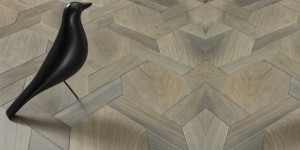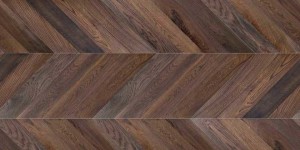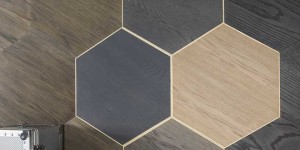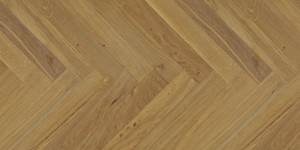Parquetry is a geometric mosaic of wood pieces used for decorative effect. The two main uses of parquetry are as wood veneer patterns on furniture and block patterns for flooring. Parquet patterns are entirely geometrical and angular—squares, triangles, lozenges. The most popular parquet flooring pattern is herringbone or chevron. Parquetry is very similar in technique to marquetry. Parquetry utilizes pieces of veneer in simple repeating geometric shapes to form tiled patterns such as would cover a floor (parquet), or forming basketweave or brickwork patterns, trelliswork and the like. Herringbone floors have rich history as a traditional floor pattern in Europe. It can be installed in several configurations, with or without a border. A popular variation of the herringbone, called Chevron or French herringbone, is prominent in many prestigious European Chateaus.
Marquetry is the art and craft of applying pieces of veneer to a structure to form decorative patterns, designs or pictures. The technique may be applied to case furniture or even seat furniture, to decorative small objects with smooth, veneer surfaces or to freestanding pictorial panels appreciated in their own right. The use of curved and natural shapes constitutes marquetry rather than parquetry. Marquetry (and parquetry too) differs from the more ancient craft of inlay, or intarsia, in which a solid body of one material is cut out to receive sections of another to form the surface pattern. The word derives from a Middle French word meaning “inlaid work”.The simplest kind of marquetry uses only two sheets of veneer, which are temporarily glued together and cut with a fine saw, producing two contrasting panels of identical design.Amongst new techniques applied to marquetry we may include laser cutting, where the design is drawn or imported as a CAD or vector file and each piece is cut separately; each different species of wood -and thickness- may need a specific adjustment of the beam’s power; the offset will determine the gap between the pieces and, in some cases, the beam will leave a dark edge due to the very high heat required by the process




